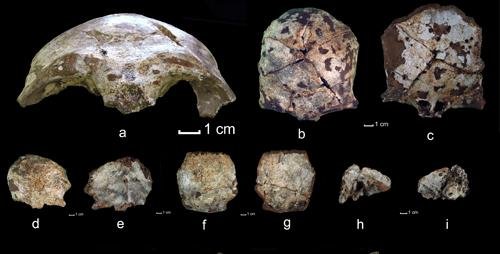The researchers found skull fragments that date to 63,000 years ago. Credit: F. Demeter/University of Illinois
CHAMPAIGN, Ill., Aug. 21 (UPI) -- An ancient skull discovered in a cave in northern Laos' mountains is the oldest modern human fossil found in Southeast Asia, researchers say.
The find in the Annamite Mountains means modern human migrations through the area occurred as much as 20,000 earlier than previously believed, they said.
The newly found skull, which dates to between 46,000 and 63,000 years old, is evidence ancient wanderers out of Africa left the coastal regions of Southeast Asia and inhabited diverse habitats much earlier than previously thought, University of Illinois anthropologist Laura Shackelford said.
"There are other modern human fossils in China or in Island Southeast Asia that may be around the same age but they either are not well dated or they do not show definitively modern human features," said Shackelford, who led the study with anthropologist Fabrice Demeter of the National Museum of Natural History in Paris.
"This skull is very well dated and shows very conclusive modern human features."
It reveals early modern humans did not confine their migrations to the coast and go directly south to the islands of Southeast Asia and Australia, as some scientists have surmised; they also traveled north into very different types of terrain, Shackelford said.
"Given its age, fossils in this vicinity could be direct ancestors of the first migrants to Australia," she said. "But it is also likely that mainland Southeast Asia was a crossroads leading to multiple migratory paths."















